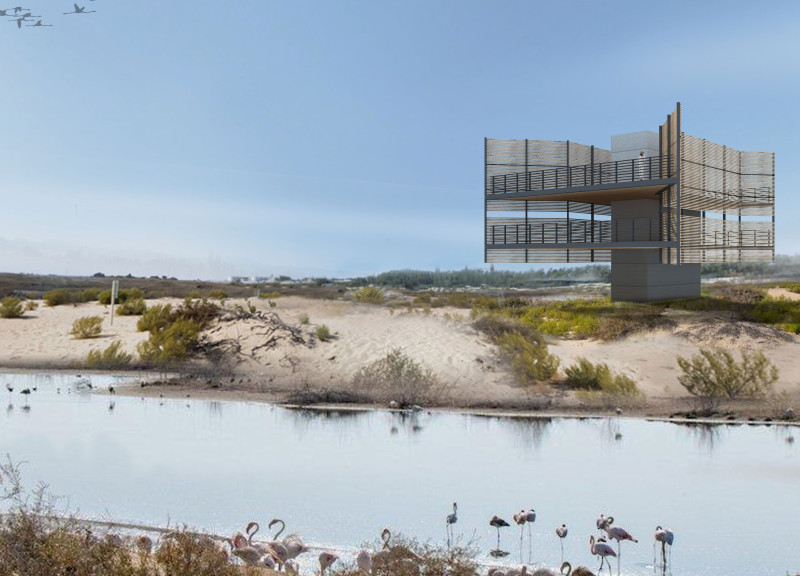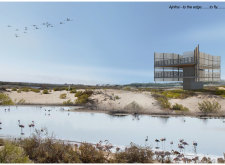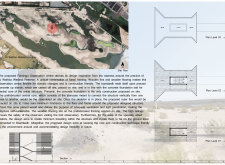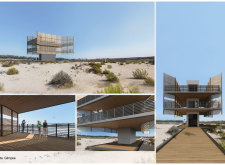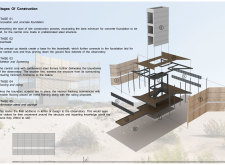5 key facts about this project
The Flamingo Observation Centre is located within the Al Wathba Wetland Reserve, designed to facilitate observation and appreciation of the diverse birdlife inhabiting the region. The design responds to the surrounding natural landscape, placing a strong emphasis on harmony and sustainability. Through its clear form and thoughtful integration of materials, the centre serves as a space for visitors to engage with nature.
Structural Framework
The observation centre features a strong structural framework made of metal framing. This choice ensures durability while allowing flexibility to adapt to varying climate conditions. The prefabricated central core is the heart of the building, providing vertical access between different levels and making it easy for visitors to move around.
Material Usage
Wooden fins are an important part of the design, serving both as visual elements and functional screens. These fins allow natural light to enter while maintaining privacy and reducing impacts on local wildlife. This feature enhances the building’s energy efficiency and provides passive ventilation, supporting a comfortable atmosphere indoors.
Foundation and Accessibility
The boardwalk is supported by precast concrete upstands, which minimize any disturbance to the ground. These components are created off-site and installed to fit with the foundation of the central core. Accessibility has been carefully considered, with ground-level access to the boardwalk enabling all visitors, including those with disabilities, to enjoy the experience without navigating complex routes.
Inside, wooden flooring enhances the natural feel of the observation spaces. This material choice adds warmth and supports visitor comfort. The design pays attention to every detail, contributing to an inviting atmosphere that encourages exploration and a deeper appreciation for the unique ecological landscape of the wetland reserve.


